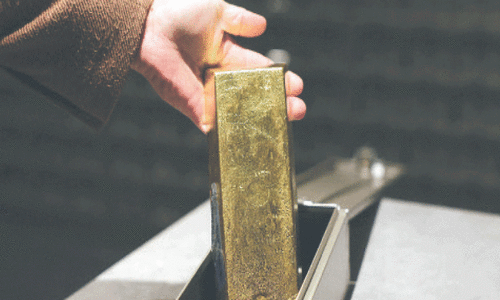ISLAMABAD: The National Electric Power Regulatory Authority (Nepra) has determined about Rs1.172 per unit (kWh) reduction in power rates for consumers of K-Electric under its profit clawback mechanism.
“The decrease in consumer class-wise tariff, on account of clawback of profits for financial year 2014-15, except for the lifeline consumers, based on actual units sold from Jan 1, 2016 to Dec 31, 2016 (ie 13,683.77GWh based on authority’s approved target of T&D losses) works out to minus Rs1.1720/kWh, for each of the four quarters from Jan 1, 2016 to Dec 31, 2016, which is hereby approved,” said the four-member regulator in its unanimous determination.
The KE’s Multi-Year Tariff (MYT) of 2009 approved by the regulator promised a performance-based tariff that offered healthy efficiency gains to the private investor and prescribed a clawback mechanism. This mechanism provided that when annual real return on the regulatory assets base (RAB) exceeded 12 per cent, the surplus shall be shared with the consumers through reduction in tariff.
The clawback mechanism entailed that 25pc of profit value exceeding 12pc return on assets and not over 15pc be transferred to consumers and 50pc in case of annual return ranged between 15pc and 18pc and 75pc in case profit goes beyond 18pc.
The regulator had previously ordered the company to share such determined amounts with consumers but KE filed civil suits against these decisions and implementation of clawback mechanism was suspended by the Sindh High Court to the extent of quarterly adjustments.
Nepra in its fresh determination said the KE was under the obligation to propose adjustment of tariff to transfer of profits based on asset base of Rs27.5bn for financial year 2014-15 but did not submit the adjustment request.
The KE was directed to report along with detailed workings if its profit for the said year qualified for the clawback benefit to consumers or not. The KE reported that its annual return on regulatory asset base was 6.62pc and thus clawback mechanism was not applicable, being less than 12pc threshold.
The power regulator observed that calculations of annual return on regulatory assets provided by KE were incorrect based on previously accepted principles for fiscal year 2011 to 2014 and assessed an initial amount of Rs6.625bn and shared with the KE.
In the meanwhile, during the course of proceedings of KE’s integrated MYT for fiscal year 2016-17 to 2025-26, certain fresh facts including earnings before interest & tax (EBIT) surfaced that necessitated revision of Rs6.625bn clawback calculations.
As such, the regulator also recalculated the EBIT, by adding back amount of Rs14bn which was deducted by KE from its revenue on account of profit clawback and incremental depreciation due to revaluation of assets by Rs2.707bn, in the reported EBIT for fiscal 2014-15.
This resulted in revised EBIT of Rs41.54bn, consequently the profit clawback for the said year was reworked at Rs16.037bn based on average regulatory asset base of Rs134.4bn.
The regulator said that since as per the notified mechanism, the impact of clawback is to be shared with the consumers and the benefit of the same shall go to all consumers classes through their bills, therefore, schedule of tariff for the quarter January to March 2016 was being issued on gross up basis ie without adjusting the impact of clawback amount of minus Rs1.1720/kWh.
This is being done in order to pass on the benefit of profit clawback directly to the consumers rather to be adjusted by the GoP in the subsidy.
Published in Dawn, July 28th, 2018














































